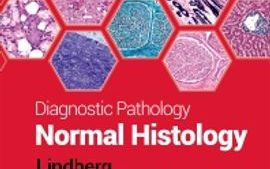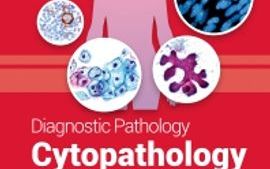- Published:
- 14 September 2023
- Author:
- Review by Dr Louisa Miller
- Read time:
- 2 Mins
At first glance, this large, hard backed textbook with over 1,000 pages of condensed knowledge looks daunting. However, on closer inspection, the book is nicely divided into 12 sections, each one covering a single organ system. Each section is then further sub-divided into chapters based on different types of conditions, with each individual condition then covered over a few pages – including terminology, pathogenesis, clinical issues, microscopy and differential diagnoses; selected references are also included at the end of each topic for further reading. Each topic also contains a page of key facts – this is a further condensed version of the information within the chapter, a great resource especially during revision and pre-exam periods, or as a quick reference during the reporting of cases.
The preface discusses the new additions to the 2nd edition, including novel molecular discoveries, updated classification systems and a new chapter that addresses COVID-19 related pathologies in the paediatric population, available in Section 8: Respiratory. The world of molecular pathology has exploded in recent years, with new discoveries happening at a record pace, so to see these being included in recent publications is helpful. I was most impressed by the addition of a fairly comprehensive chapter on current understandings of COVID-19 related pathologies, and so quickly after the virus’s emergence.
From the standpoint of a histopathology trainee, one of the best features in this textbook is the high quality, full colour, glossy images. Within the discussion of each condition, at least two microscopy images are included and often a relevant clinical picture too. For example, within Section 1: Skin, a colour photograph is included to demonstrate what each rash/condition looks like; this is invaluable when learning in a pattern recognition-based specialty.
A particular pet peeve of mine in histopathology textbooks is when a histology image is described showing a specific feature, but that feature is not actually pointed out, especially within a picture containing hundreds of individual cells. This book avoids this beautifully by annotating images and highlighting multiple salient features with different types of arrows.
The online version of the book, available with the code inside the front cover through Elsevier eBooks, provides a similar user-friendly layout, with a key facts page at the start of each topic, great quality annotated images and a thorough discussion from clinical presentation through diagnosis to differential diagnoses. An added bonus for the online version is the availability of hyperlinks for each reference. This makes finding the specific references quick and easy.
Overall, I found this a really helpful textbook. It covers all the necessary information in easy to digest bullet points, with detailed and annotated clinical and microscopic images. I would highly recommend this book and would consider buying it myself.
Return to July 2023 Bulletin homepage
Read next



